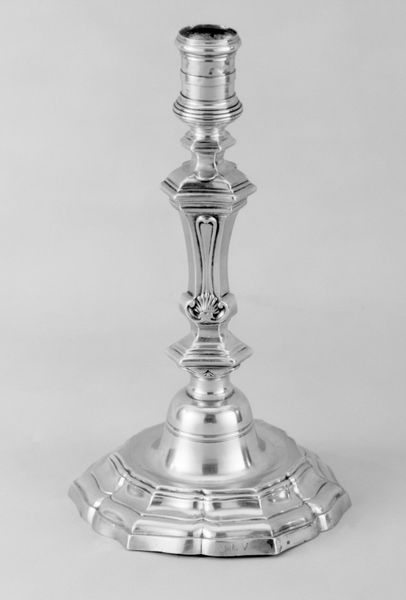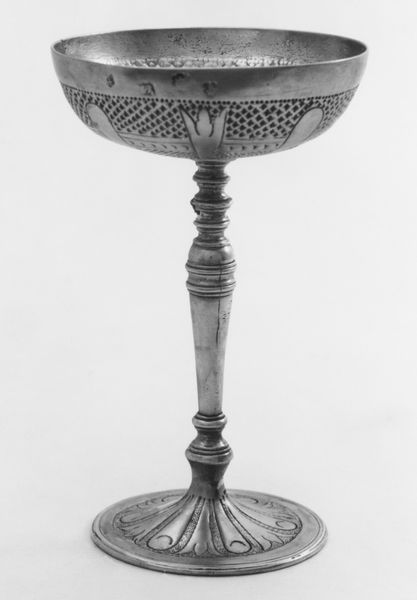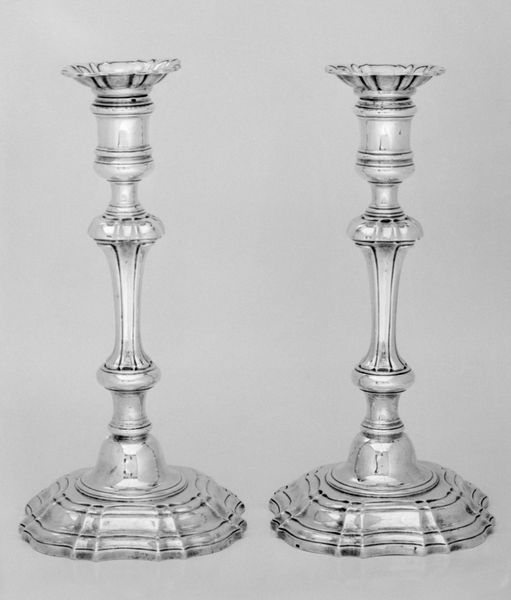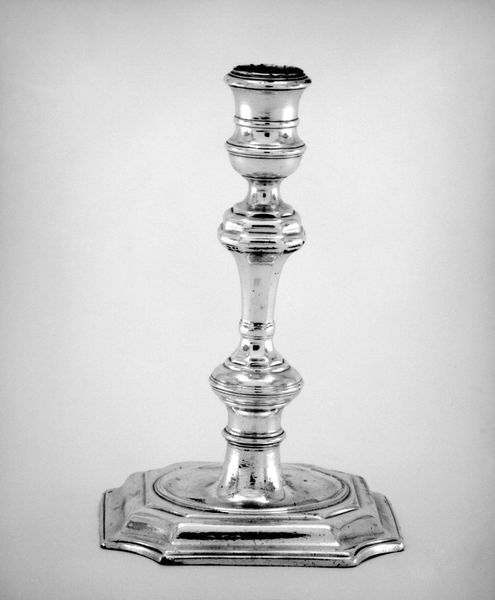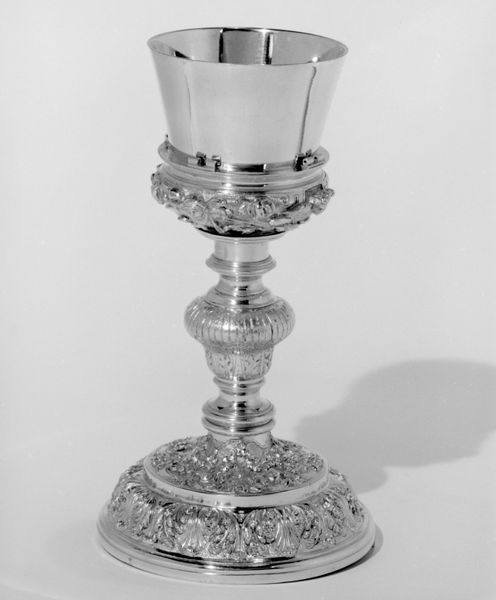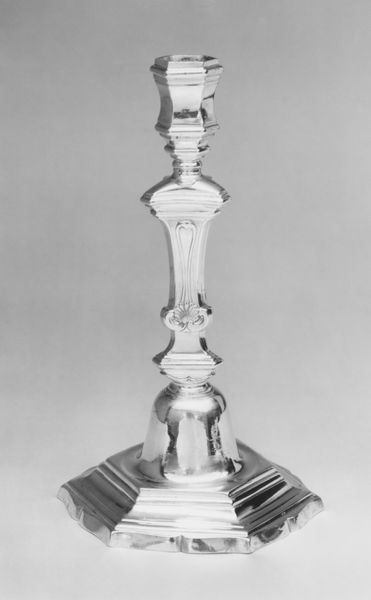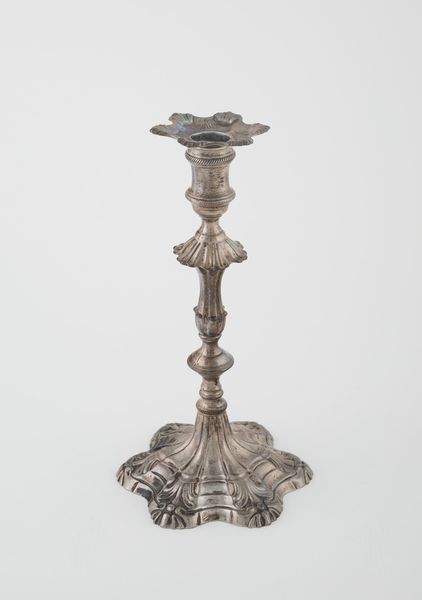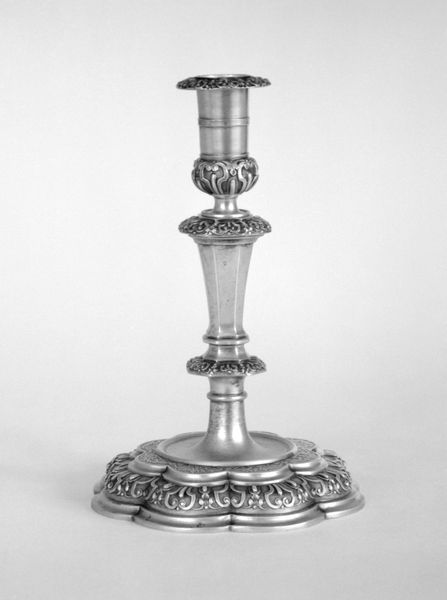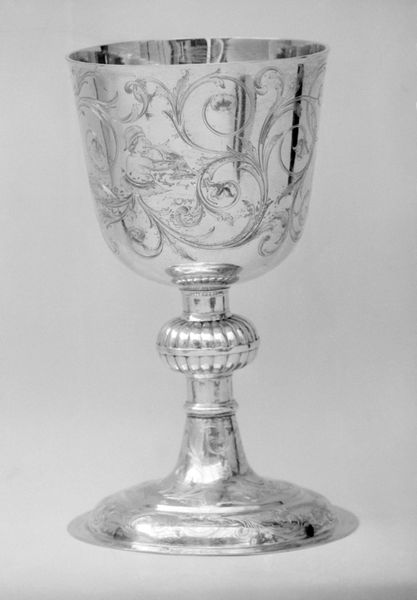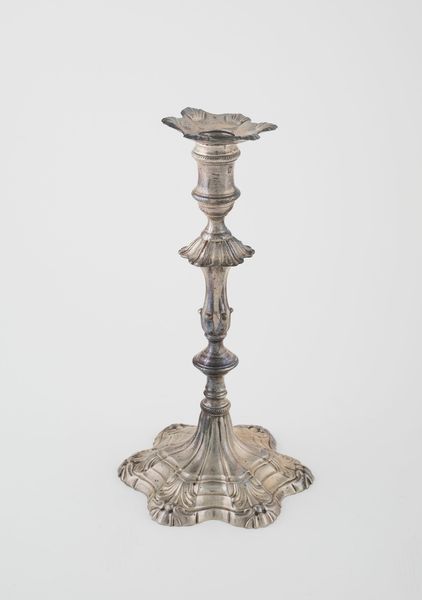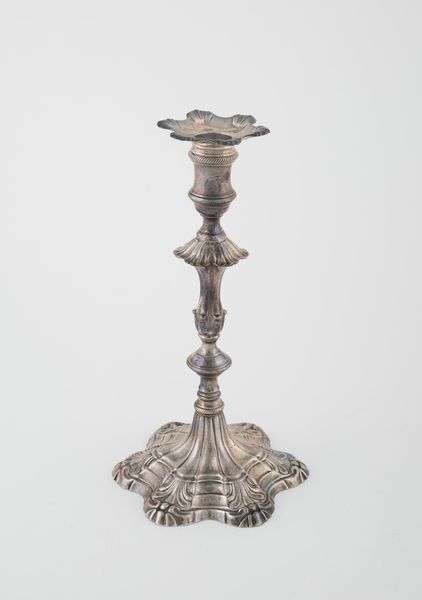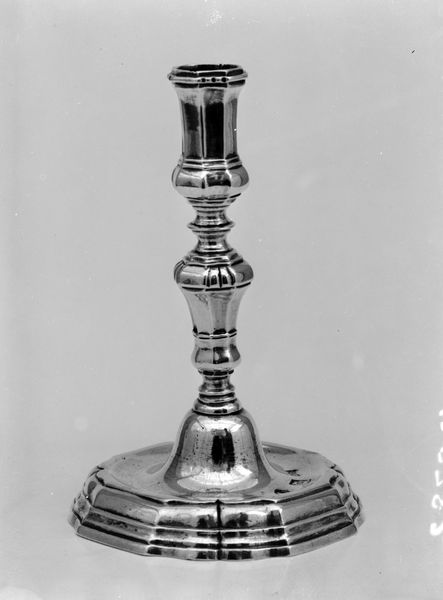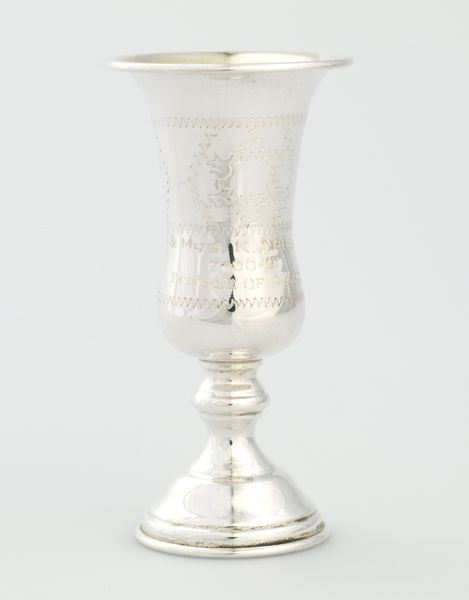
silver, metal, sculpture
#
silver
#
baroque
#
metal
#
sculpture
#
sculpture
#
decorative-art
Dimensions: Height: 9 3/8 in. (23.8 cm)
Copyright: Public Domain
Curator: Gaze upon this striking example of Baroque craftsmanship, a silver candlestick dating back to between 1730 and 1745. Editor: Immediately, I'm struck by its theatrical quality—almost excessively ornamented, as if desperate to steal the show on a dimly lit table. Curator: Indeed, that ornate style is characteristic of the Baroque period, where artists and artisans sought to evoke emotion through grandeur and complex detail. Note the sculpted faces at the base. They echo the busts you'd see from Antiquity. Editor: Those little faces! Are they gargoyles? They definitely have a 'don't mess with me' vibe. And the scalloped edges, it’s all so opulent. Imagine the flickering candlelight reflecting off the silver… talk about atmosphere. Curator: Silver like this was a clear marker of status and taste in the 18th century. Owning such items demonstrated economic and social standing, serving a vital role in the domestic rituals and presentation of the elite. Editor: So it’s not just a candlestick, it’s a statement. Makes you wonder about the rooms this piece has lit, the conversations it’s silently witnessed over the centuries. Has it ever seen anything scandalous, I wonder? Curator: Certainly, objects like these participated in a visual language that reinforced social hierarchies, projecting power and authority. Editor: I still love how the ornate details contrast with the basic functionality. It reminds me that even something simple can become a canvas for expression. All this extravagance seems somewhat absurd to us today, yet maybe there's something beautiful about living in that heightened reality. Curator: Studying these works offers us insight into the past’s perception of beauty and value. These objects have lasting impacts on the tastes of succeeding generations of artists, artisans and their publics. Editor: I agree. Looking at the candlestick has gotten me thinking about how we use objects today to express our identities, how what seems ‘excessive’ or ‘just enough’ shifts across eras and personal contexts. And that, to me, makes the piece come alive in the present moment.
Comments
No comments
Be the first to comment and join the conversation on the ultimate creative platform.
